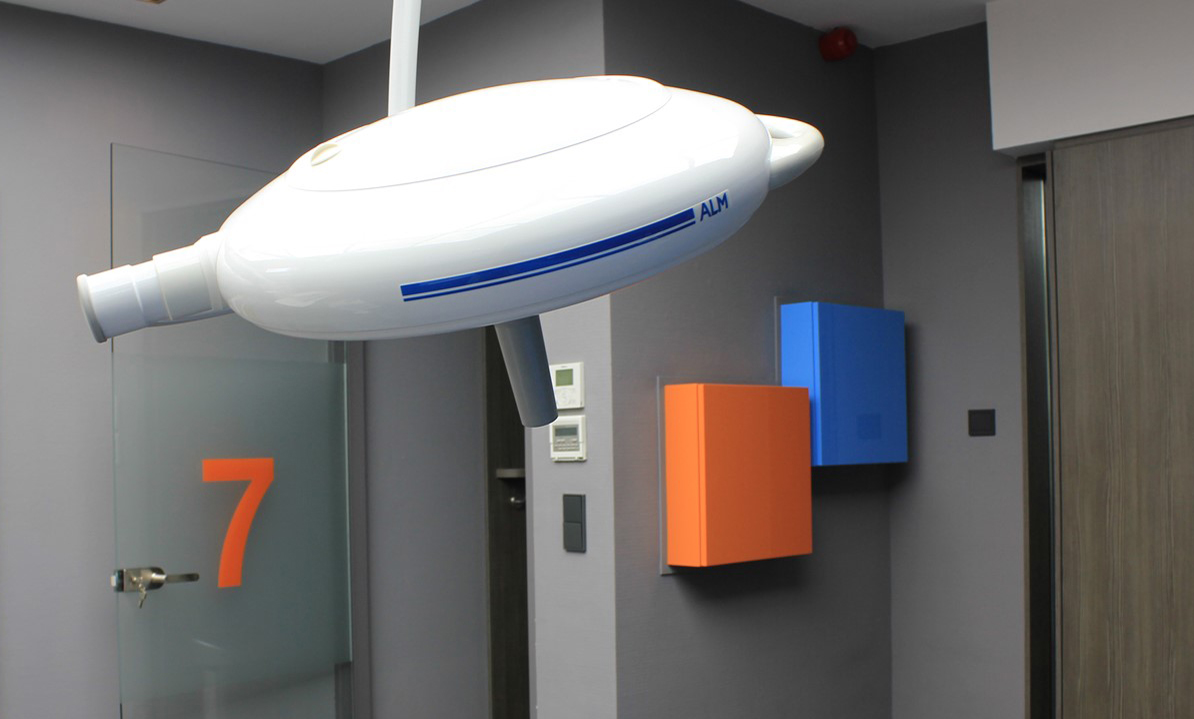Implant crown – standard
If you have lost one tooth or one molar then the most elegant way of repairing the loss is to use an implant crown. Unlike the treatment involving the manufacture of an (acid-etched) bridge or (frame) prosthesis, this treatment causes no damage to the other teeth or molars. The implant is fitted first and after a healing period of 2 to 6 months the tooth or molar is screwed onto the implant.




Implant crown – direct tooth replacement
In the aesthetic zone (front teeth and premolars) we endeavour to achieve direct replacement: in other words, removal of the tooth/molar, direct fitting of an implant and direct construction of a plastic tooth or molar onto this. A porcelain tooth or molar is made after a healing period of 6 months. The benefit of this for you as a patient is that you don’t need to live the rest of your life with a missing tooth or with a prosthesis and this technique also prevents the further shrinkage of the jaw after the tooth has been removed.
Implant bridge – standard
If you have lost several teeth or molars then an implant bridge is usually the best way of fully restoring the function of your teeth. The comfort and chewing ability of an implant bridge or implant crowns is many times better than a frame prosthesis. The implants are fitted first and, after a healing period of 2 to 6 months, the porcelain bridge is fitted onto these.




Implant bridge replacement
In the aesthetic zone (front teeth and premolars) we endeavour to achieve direct replacement: in other words, removal of the tooth/molar, direct fitting of an implant and direct construction of plastic teeth/molars onto the implants. Direct replacement is also often possible when replacing all teeth and molars, so you don’t have to live the rest of your life with a set of dentures. A condition for this is that your gums are clean and healthy.




Click-dentures in the lower jaw
Most people wearing a prosthesis have complaints ranging from pain when chewing, sunken mouth, chronic cracked corners of the mouth to the prosthesis dislodging when speaking, laughing, coughing or sneezing. This makes people feel insecure when in the company of others. Click-dentures offer a solution. Depending on your situation, push buttons or a post structure on two, three of four implants may be necessary. If you have no bottom teeth and are suffering from one or more of the complaints listed above please make an appointment for a consultation. On the basis of a mouth examination and an X-ray we shall assess whether you will be eligible for implants to be fitted under your basic health insurance policy.
Click-dentures in the upper jaw
If you lose some of your upper teeth there is usually still sufficient grip that will allow you to wear a prosthesis. However, this is not the situation in some cases, for example when there is insufficient jaw ridge for the prosthesis grip. In such cases click-dentures on four or six implants is the designated solution. Sometimes there is insufficient bone volume present for the implants to be fitted into the upper jaw and it will then be necessary for a bone repair procedure to be undertaken in advance.
All-on-4 bridge
These days many people prefer not to let matters go so far that they have to start wearing a set of dentures. As an alternative these people have what is known as an “All-on-4 bridge” produced, whereby the teeth deemed to have been lost are replaced in a single day by a fixed bridge on implants. Sometimes it is also possible to replace a set of dentures with a fixed bridge of the same concept in a single day. The permanent titanium-reinforced artificial bridge or permanent porcelain bridge can be produced after 3 to 6 months. More and more people are choosing a fixed solution rather than a removable set of dentures.



